Apr 24, 2025
Author:Jackson Watson
Want to know how to get ammonia smell out of carpet? According to SearchGate, more than 60% of households face repeated cases of indoor odor, and ammonia is one of those which causes this issue—most especially if a home has pets. If you are concerned with how to remove ammonia smell out of carpet, you certainly have the company of numerous homeowners who have also grappled with the issue. One of the most overwhelming and nearly impossible to eliminate smells is that of ammonia trapped deeply in the carpet pile. It can come from the urine of your pet, floor cleaning agents, or any random spilling of food items on the carpeted floor.
The good news? The important thing that you want to remember is that you do not need to suffer from it. This guide provides all the necessary information about the odor itself and the do-it-yourself or chemist solutions. You will also get to know more on statistics concerning the occurrence of household odors together with how to avoid having them in the future.
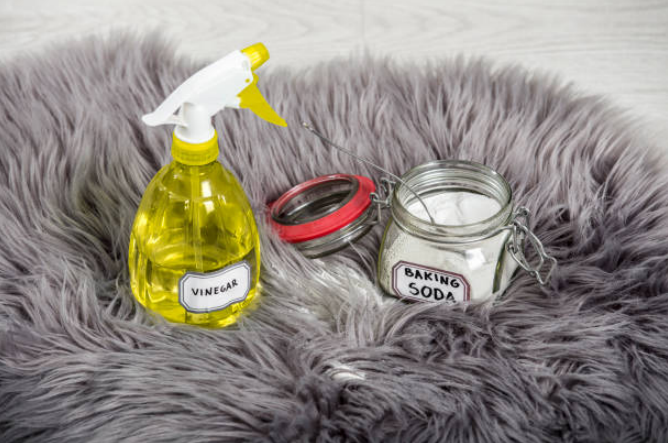
Ammonia (NH₃) is a colorless gas, which has a very strong, pungent smell. It is present in most households as a degreaser in cleaning chemicals, in urine, and other products that may contain pet’s urine. Although useful for some purposes, ammonia is also a rather toxic substance that acts as an extreme skin and lung irritant, if inhaled for an extended period of time.
● Untrained cats and puppies are also worst when it comes to using the urine
● As observed in the security report, cleaning products containing ammonium hydroxide increase the security risk of a building
● Spills from fertilizers or industrial chemicals
● Bacteria that feeds on dead germ particles present on the carpet fibers
When ammonia gets into the carpet mat and fibers, it is much more difficult to clean with simple washing methods.
All carpets do not have the ability and capacity to hold smells and odors in the same manner. Nevertheless, the nature of the carpets also determines the extent to which it can trap the smell of ammonia as well as how hard it is to eliminate the smell.
Susceptibility: High
Wool fibers are natural and possess open pores that enable ammonia and other smells to penetrate them easily. Since wool is hygroscopic, it has the ability to retain moisture and other odors for some time.
Ease of Removal: Difficult
Such fabrics as wool are known to retain ammonia smells for longer periods and may need washing and cleaning solutions such as professional washing, steam cleaning, among others.
Susceptibility: Moderate to Low
Synthetic types of carpets are often stain repellent and do not easily attract odors like the natural ones. However, they are not completely spared when it comes to having a bad smell associated with ammonia. For example, polyester has a more absorbent texture that may trap smells more than nylon and olefin fibers.
Ease of Removal: Moderate to Easy
Cleaning ammonia smell on nylon or olefin carpets may be done by using enzyme cleaners or white vinegar for those who want to do it themselves. Polyester may require slightly more effort to eliminate the smell completely.
Susceptibility: High
Berber carpets, which may be made from wool or wool blends, have a loop pile that traps ammonia smells in the loops of the fibers. From the texture, one gets to understand that it is difficult for cleaning solutions to penetrate deep into the surface, hence the persistence of smell.
Ease of Removal: Difficult
Common methods of getting rid of ammonia smell in Berber carpets include hiring the services of an expert cleaner and the use of enzyme-based cleaners.
Susceptibility: Moderate
Cut pile carpets have a smoother surface and they do not usually hold odors as much as looped pile carpets such as Berber. However, if ammonia gets through the carpet surface or is present in the carpet backing or padding, it will be absorbed.
Ease of Removal: Easy to Moderate
They are easier to clean than Berber or wool carpets, but such intensive smells can be removed only with steam cleaning or using several kinds of cleaning methods concurrently.
Susceptibility: High
Since they are long-berbere, shag carpets tend to hold smells such as ammonia. Long strands give it an extra ability to retain moisture and absorb any smell that is in or around the material.
Ease of Removal: Difficult
Shag carpets also come with lengthy fibers that make them hard to clean. One has to clean them via steam cleaning or use enzyme cleaners. Vacuuming will assist, but spot treatments will not be sufficient to eradicate the smell completely.
These facts make one realize how immense and difficult the task of implementing effective odor control really is:
The current study also reveals that 69% of pet owners claim to have a problem with pet odor in the house, of which ammonia was the most common.
About 50% of residual carpet odors come from bacteria and residue that can be trapped in the carpet cushion.
A survey revealed that ammonia-based cleaners were to blame for 15% of the complaints on indoor air quality in homes.
According to research, steam cleaning removes bacteria in carpets by as much as 99%.
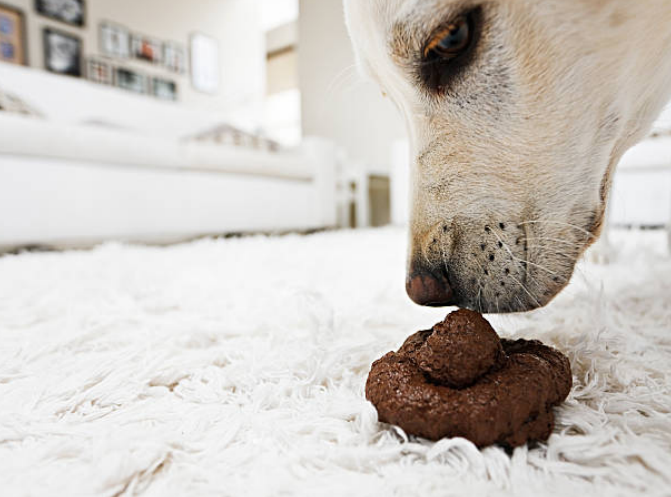
Timing is everything with ammonia from urine or new cleaning product spills.
Instructions:
● Blot the stain using paper towels or a fresh microfiber cloth.
● Don't rub, as it pushes the ammonia further into the fibers.
● After removing surface moisture, apply baking soda in a generous quantity to the area.
● Allow 30–60 minutes, and then vacuum until the spot disappears.
Why it works: Baking soda can pick up moisture and odor particles.
White vinegar is acidic and counteracts the alkalinity of ammonia.
● Mix 1 part distilled white vinegar with 1 part warm water in a spray bottle.
● Lightly mist the stained area, then blot carefully.
● Let the area air dry.
● Add a few drops of essential oils such as nder, eucalyptus, or tea tree for scent and antibacterial benefits.
Warning: Do not over-saturate the carpet to avoid mold growth.
Enzyme cleaners are your go-to for tough or aged ammonia odors—such as from pet urine.
● Spray product liberally over the offending area.
● Let it stay a minimum of 10–15 minutes (or according to the label).
● Blot dry with a towel and air dry naturally.
How it works: The cleaners deconstruct ammonia molecules and organic matter at the molecular level.
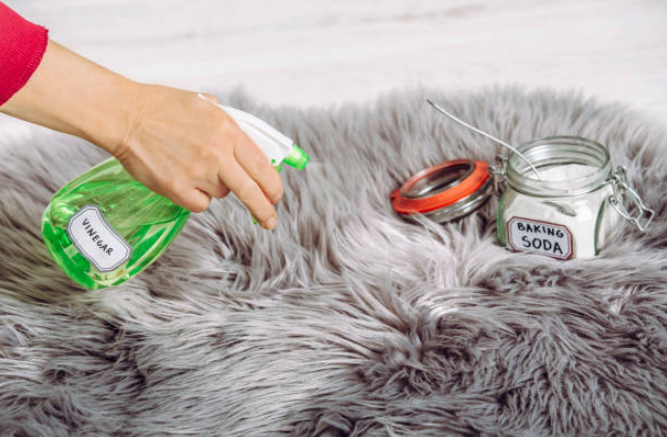
This dynamic duo is perfect for tougher cleaning—but always pretest first.
● Combine ½ cup baking soda and ¼ cup 3% hydrogen peroxide.
● Add a few drops of dish soap (such as Dawn).
● Apply the paste to the stain with gloves.
● Let sit for an hour, then vacuum and blot with warm water.
Warning: Hydrogen peroxide will bleach or lighten dark-colored carpets. Always test first on a small, inconspicuous area.
Steam cleaning reaches deeper than surface levels and sanitizes the carpet.
● Rent a steam cleaner or borrow your own machine.
● Pre-treat the area with vinegar or an enzyme cleaner.
● Steam clean the carpet thoroughly.
● Allow it to dry completely with fans or open windows.
Stat Bonus: This method kills up to 99% of bacteria, making it an elite odor-removal method.
If you prefer more natural alternatives, try these:
● Activated Charcoal Bags:
Put some in the room or right by the carpeted area to soak up lingering odors.
● Coffee Grounds:
Cover the area with dry, unused coffee grounds, leave for 24 hours, and then vacuum.
● Citrus Peel Sachets:
Dried lemon or orange peel in a mesh bag left nearby the odor can quietly eliminate ammonia odors.
● Vacuum 2–3 times weekly.
● Apply odor-eliminating carpet powders monthly.
● Schedule professional carpet cleaning annually.
● Create regular bathroom habits for pets.
● Utilize washable puppy pads or indoor potty trays.
● Clean up accidents immediately with enzyme-based cleaners.
● Open windows every day to encourage air flow.
● Utilize HEPA-filter air purifiers in rooms where pets or carpet smells are prent.
Recurring pet odors due to urine and accidents?
WOpet offers technology-based products to ensure your carpet remains clean and fresh.
● WOpet Automatic Pet Feeder: Ensures regular feeding schedule, which minimizes anxiety-related accidents.
● WOpet Pet Accessories: Combine with accessories to make your pet care process automated.
WOpet products are crafted with both pet safety and odor prevention in mind, so they are a great long-term solution for pet-owning families.
Working with recurring ammonia odors in carpet does not have to be maddening. By knowing the cause and employing appropriate cleaning products—such as vinegar, baking soda, enzyme cleaners, and steam—you can restore a fresher living space.
Prevention is also important. Proper pet training, frequent carpet maintenance, and enhancing air circulation can prevent odors from recurring. In pet homes, incorporating smart solutions such as WOpet's odor eliminators and smart feeders can place you ahead of accidents and remaining odors.
With this complete guide on getting ammonia smell out of carpet, you're now armed with realistic, research-tested ways to get your home's comfort back in order.
Need advice for your specific carpet type or dealing with extra-stubborn odors? Leave a comment below or reach out—we’re happy to help!
Popular Post

What to Feed a Sick Dog With No Appetite? [2025 Guide]
May 16, 2023

Troubleshooting Common Issues with Automatic Pet Feeders: Tips & Tricks for Pet Owners
Oct 26, 2023
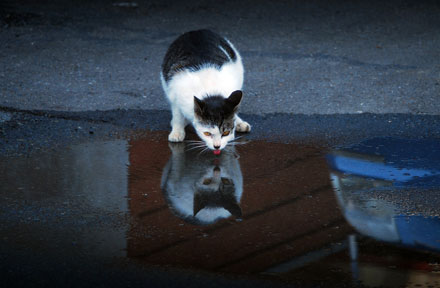
Why Does My Cat Cough After Drinking Water? 8 Potential Reasons
Mar 13, 2023

My Cat Only Eats A Little at A Time - What to Do?
Feb 27, 2023
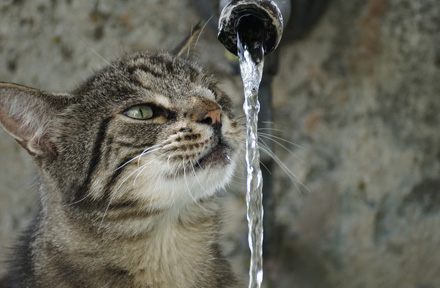
Why is My Cat Throwing up Water? Top 5 Causes Here
Feb 08, 2023
$99.99
$129.99
Copyright © 2025 WOPET. All Rights Reserved.